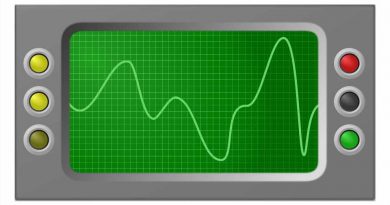Invasive lobular breast cancer: Prognosis, treatment, and remission
According to the American Cancer Society, about 10 percent of people who get invasive breast cancer have invasive lobular carcinoma (ILC).
Approximately 80 percent of people with invasive breast cancer have invasive ductal carcinoma (IDC). It is the most common type of breast cancer, and it affects the ducts that carry milk through the breast.
If a lobular breast cancer is invasive, this means that it has spread beyond the lobule to other parts of the breast. In some people, it spreads beyond the breast tissue into other parts of the body.
ILC can develop at any age, but it tends to be more common in older people. Some evidence suggests that using hormonal replacement therapy after menopause may increase the risk.
In this article, learn more about the prognosis and survival rates for ILC, as well as how doctors treat the disease.
Prognosis

The prognosis (future outlook) after a cancer diagnosis depends on several factors, including:
- the size of the cancer
- whether the cancer has spread and where it has spread to
- a person’s age
- a person’s general state of health
- the effectiveness of the treatment
- the cancer grade, which measures how abnormal the cells appear at a microscopic level
The prognosis also varies depending on the stage of the cancer. A lower number means that the cancer is in an earlier stage, while a higher number means that the cancer has advanced.
Survival rate
A survival rate can show how many people with the same type and stage of cancer are still living 5 or more years after receiving the diagnosis.
These statistics do not take age or overall health into consideration.
In general, if doctors diagnose and treat cancer in the early stages, survival rates tend to be higher. If cancer has advanced, for example by spreading beyond the breast tissue, survival rates are likely to be lower.
Depending on the stage of breast cancer, the general 5-year survival rates for women are:
- Stage 0 or 1: nearly 100 percent
- Stage 2: about 93 percent
- Stage 3: around 72 percent
- Stage 4: approximately 22 percent

Doctors can treat ILC in two ways: locally and systemically.
Local treatments for ILC target the tumor and the area that immediately surrounds it.
These treatments can include surgery, such as a lumpectomy or mastectomy, or radiation therapy that directly attacks the cancer.
Systemic treatments for ILC attack cancer cells that have spread beyond the breast tissue.
Chemotherapy and hormonal therapy are the two main systemic treatments for ILC.
Depending on how advanced the cancer is, a doctor may recommend a combination of local and systemic treatments.
An oncologist, or cancer specialist, will help determine the best treatment plan for each person. They will take several factors into account, including the person’s general health and the grade and stage of the cancer.

Remission
If treatment cures cancer, this means that it destroys all of the cancer cells, and the cancer will never return. Although this is the goal of treatment, it is not always possible.
Often, cancer goes into remission. A person may have few or no clinical symptoms, but cancer cells still exist in the body.
Some doctors consider someone whose cancer has been in remission for 5 years or more.
Cancer cells can survive in the body for many years. If a cancer recurs after the initial treatment, most tend to do so within the first 5 years of remission.
During remission, a doctor carefully checks for any indications of the cancer’s return, as well as for any late side effects of treatment.

Summary
Receiving a cancer diagnosis can be stressful, and many people worry about the outcome.
When doctors diagnose ILC in early stages, survival rates are higher.
There are several treatment options for ILC, depending on the stage and nature of the cancer.
Joining a support group and talking to loved ones can help a person cope with the challenges of a cancer diagnosis.
Source: Read Full Article



